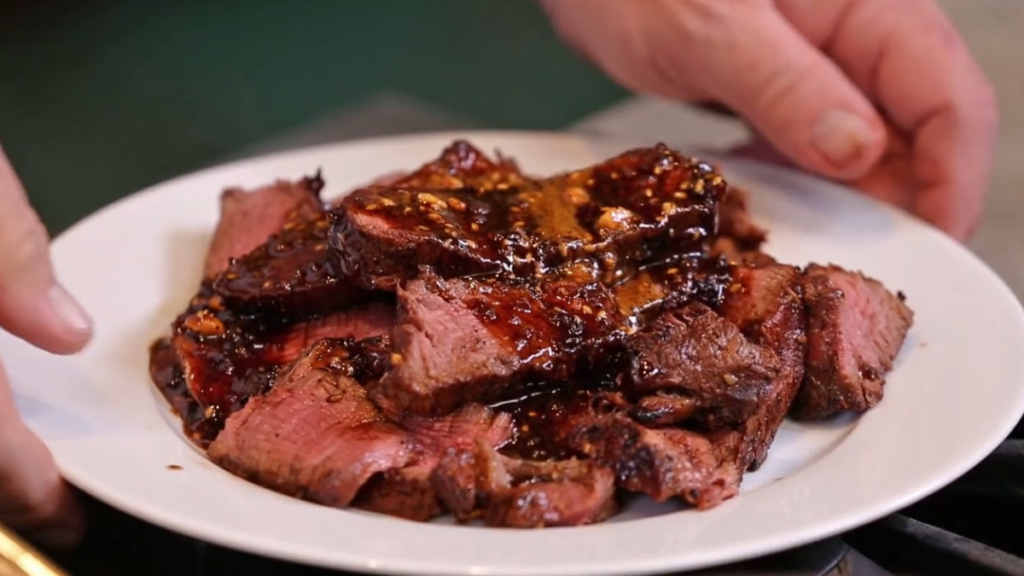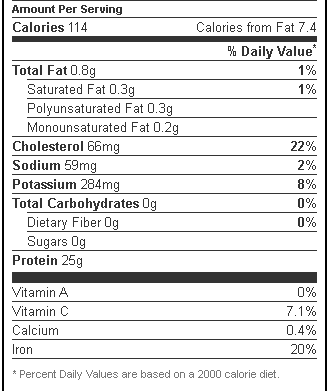Moose meat is not frequently available on the shelves of most supermarkets, but perhaps it ought to be. Along with being rich in protein, iron, and B vitamins, wild game meat also possesses a special fatty acid composition found only in the meat of large game animals like moose, deer, caribou, and elk.
There may be a slight learning curve if you wish to include moose meat in your diet but have never cooked it before. It requires a little additional attention when cooking, as with all game meats, but if you get the hang of it, you might want to make it a regular.
What is Moose Meat?
Moose are members of the family Capreolinae, also known as the New World Deer. The moose, along with the western and eastern roe deer, the caribou, the reindeer, and many other deer species, are among this family’s largest members. Moose are big animals, growing to a height of around 6 feet and weighing more than 1,000 pounds. Only a few countries on earth, including Alaska, Canada, Finland, Russia, and Sweden, have access to moose meat. It is only found in certain parts of the world and is recognized as a delicacy or local dish in certain places (well, legally that is).
Moose meat seems aesthetically similar to any other cut of red meat, such as beef, but has a much deeper and richer red color. Moose meat is a member of the venison family, which also includes deer, antelope, and elk meat.
Although moose and elk are not related in the United States, moose meat is frequently referred to as elk in Asian and European nations. Only those who directly hunt the animal are permitted to consume its meat, which cannot be sold commercially (more on this later). This intensifies its uniqueness.
Moose Meat Nutrition Facts
Health Benefits of Moose Meat
The majority of individuals are aware of the advantages of consuming common foods like beef, chicken, and pork for their health. However, did you know that eating moose meat has a tonne of health advantages as well? In order to reap the rewards of eating moose meat, you should really consider including more of it in your diet even if it might not be as easily accessible at the grocery store.
Moose Meat is a Great Source of Protein
A 100-gram dish of moose meat only has roughly 100 calories. However, that meal is jam-packed with more protein than enough. A total of 22 grams of protein and a number of important amino acids are provided for you. At the same time, since moose meat is entirely devoid of carbohydrates, you won’t consume any.
There is Very Little Fat in it
Moose meat has no carbohydrates and is virtually entirely fat-free. Per serving, it has just 1 gram of fat, with less than 0.5 grams of saturated fat. The type of fat that is unhealthy for you is saturated fat since it increases your LDL cholesterol levels. Compared to steaks and other fatty meats, moose meat is a much healthier choice for you because it is low in saturated fat.
It has a Very Low Salt Content and High Potassium Content
Do you want to lower your chance of developing heart and kidney disease and keep your blood pressure at a healthy level? Consume more moose meat! With only roughly 65 milligrams of sodium per serving, it has a very low sodium content. With more than 300 mg of potassium per serving, it is also unusually high in potassium. Your blood pressure will benefit from the combination of these two factors, and your risk of suffering a heart attack, a stroke, or another major event will be reduced.
It has a Tonne of Minerals and Vitamins
The amount of vitamins and minerals in moose meat is practically impossible to count. 5 milligrams of niacin, 0.3 milligrams of riboflavin, 9 milligrams of selenium, 3 milligrams of iron, and 2.8 milligrams of zinc are all present in a single meal. You may enhance everything from your body’s capacity to process food to your entire immune system by ingesting all of these vitamins and minerals. It becomes obvious that we should eat more moose meat.
What does Moose Meat Taste Like?
Overall, the flavor of moose meat is highly distinctive and unlike that of any other meat on the market. Although it has been compared to chicken, beef, and bison, moose meat enthusiasts contend that these comparisons do not adequately capture the flavor of moose meat. If moose meat experts had to compare it to meat, they contend that the flavor and texture are more like a combination of beef and bison with a gamey undertone. Because of its high-fat content, moose meat is frequently harder.
Due to the location of the animal’s fat, moose meat is particularly lean in comparison to other meats that are fatty. A moose’s fat is located between the muscle and its extraordinarily thick skin, also referred to as its “hides.” As a result, the meat becomes extremely tough, with a texture resembling that of a rough, lean piece of beef. When we say that moose meat is “gamey,” we imply that it has a flavor that can only be found in wild game animals.
Those who have never eaten wild meat may find it challenging to consume because it is regarded as aromatic and musky. It can nearly taste acidic and have a faint rancid or spoilt scent, but it is all part of the experience of eating gamey meat. It only signifies that it came from a wild animal, which does not imply that it is terrible.
Can You Eat Moose Meat Raw?
Another specialty known as tartare is typically cooked with beef, but some people like to use venison instead. The uncooked beef is usually ground or finely chopped before being combined with an egg yolk and other ingredients and spread over bread.
The danger of contracting a foodborne illness from both the raw meat and the raw egg that is consumed in tartare is relatively significant. It is not advised, but some experienced hunters will take the chance by preparing a tartare of moose or other game flesh.
Toxoplasmosis, a parasite that can be exceedingly harmful to consume, may be present in raw moose flesh. The dangers can include flu-like symptoms, such as headaches, fevers, and muscle pains that can continue for days or even weeks. Since moose are wild game, it is impossible to tell if the moose you hunted has toxoplasmosis or not, hence it is recommended to stay away from raw moose meat at all times. The danger is not worthwhile!
How do you Store Moose Meat?
Whether the moose meat is cooked or uncooked, as well as when you intend to eat it, will determine the best manner to keep it. Before cooking, raw moose meat can be kept in the refrigerator for about 2 days. But these two days start as soon as the moose are hunted and cleaned. It is advisable to store your moose meat in the freezer because raw moose meat does not keep well in the refrigerator.
To maintain freshness, you should wrap it in freezer paper. It can keep for up to a year in the freezer. In the refrigerator, cooked moose meat should remain fresh for 3 to 4 days, however, 3 is generally the safest number.
Is Moose Better Than Beef?
Low-fat – With only one gram of fat per serving, less than half of it is saturated fat, making moose meat practically fat-free (the bad kind of fat that raises your LDL cholesterol levels). Compared to beef and other fatty meats, moose meat is a much better option because it contains less saturated fat. A considerably leaner, harder, and meatier variation of beef or bison can be found in the flavor of moose flesh. But unlike beef, it has a very distinctive flavor that is much stronger and gamier.
Moose frequently also retain the flavor of the vegetation they consumed while living there, which is typically a floral taste from willow buds. If moose meat experts were to compare it to meat, they might remark that it has a flavor and texture that is something akin to a cross between bison and beef with a gamey flavor. Moose meat is tougher because it has more fat.
Is Moose Meat Good for the Heart?
Moose meat has a salt content of only 65 milligrams per 100 grams, which is incredibly low. Additionally, this wild game has 317 milligrams of potassium when powdered or cooked slowly. Your risk of renal and heart disease can be reduced by eating moose meat. You are already well on your way to consuming the recommended daily amount of potassium, which is more than 300 milligrams per serving.
This potent combination encourages normal blood pressure and dramatically reduces your risk of heart attack, stroke, and other illnesses. Moose meat contains no carbohydrates at all. Niacin and riboflavin, two important B vitamins, are abundant in roasted moose flesh. These vitamins are crucial for healthy skin, hair, nerves, and muscles as well as growth and development. They also assist our bodies in utilizing the energy that comes from food. Additionally, roasted moose is a fantastic source of iron.
Conclusion
Moose contains a lot of connective tissue, which can make cooking it quite difficult. The meat can, however, be made more tender by boiling it for a bit and then pounding it with a kitchen mallet. The flavor of moose is sweet and gamey. It is eaten with many of the same side dishes as beef, including potatoes, gravy, corn, and salad. The cut can affect moose meat. People should boil the meat before roasting it to help get rid of the gamey flavor. Butter can be used to fry or sauté moose steaks. The majority of cuts require much more time to cook than venison, hog, or beef. Numerous meals also include the components of onion, broth, and mushrooms since they go well with this meat.


